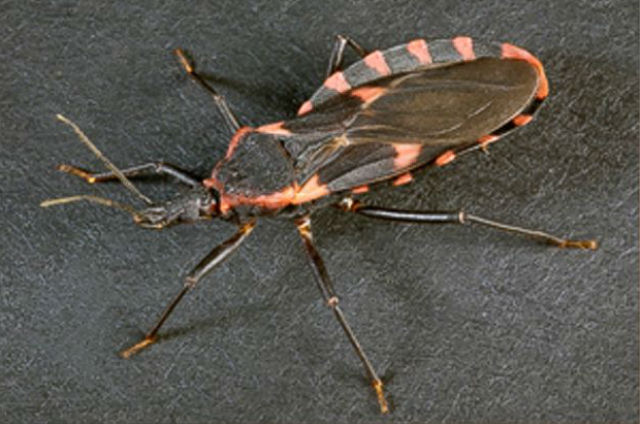-
Tips for becoming a good boxer - November 6, 2020
-
7 expert tips for making your hens night a memorable one - November 6, 2020
-
5 reasons to host your Christmas party on a cruise boat - November 6, 2020
-
What to do when you’re charged with a crime - November 6, 2020
-
Should you get one or multiple dogs? Here’s all you need to know - November 3, 2020
-
A Guide: How to Build Your Very Own Magic Mirror - February 14, 2019
-
Our Top Inspirational Baseball Stars - November 24, 2018
-
Five Tech Tools That Will Help You Turn Your Blog into a Business - November 24, 2018
-
How to Indulge on Vacation without Expanding Your Waist - November 9, 2018
-
5 Strategies for Businesses to Appeal to Today’s Increasingly Mobile-Crazed Customers - November 9, 2018
Kissing Bug, Insect That Carries Parasite, Reported in Florida
Damage caused by the Chagas disease can affect the heart, and health officials say it has already spread across more than half of the US states.
Advertisement
A rare parasitic infection called Chagas disease has been gaining headlines in recent weeks after cases of the infection were reported in at least five states, according to the U.S. Centers for Disease Control and Prevention.
The CDC offers information about the bugs that carry the illness and how to avoid their bites.
The bug is about an inch long and feeds on mammals’ blood.
While it’s rare to contract Chagas from the so-called kissing bug, there are now 300,000 cases of Chagas in the USA, across 28 different U.S. states.
The bugs may, or may not, carry the parasite that causes Chagas disease – It’s the parasite, not the bug itself responsible for spreading this potentially fatal condition. Infection occurs when a parasite-carrying kissing bug happens to defecate on a victim and the resulting feces finds its way into an open wound.
The parasite resides in the insect’s intestinal tract and can enter a human bloodstream if a person scratches a bite and the parasite enters through the scratches. The parasite may also enter the body through mucous membranes, such as the eye or mouth.
The disease is caused by the Trypanosoma cruzi parasite and is spread nearly exclusively through bites from the triatomine insect, also called the “kissing bug”, since it usually bites around the eyes and mouth, usually when they come out to feed at night. According to the Centers for Disease Control and Prevention, the bugs have invaded several southern states, with sightings of the bug being reported in Arizona, Arkansas, Texas, and now, in central Florida. Once the Chagas parasite is inside the body, the CDC says, it can remain hidden for years, eventually giving the infected person heart disease.
Advertisement
What people should know about the bug is that it is primarily nocturnal and generally found beneath porches, under cement, and in rock piles, brush piles, wood, and beneath bark. But the CDC issued a warning so that people are aware and become vigilant. Instead, it’s recommended that they are caught by putting a container on top of them, sliding the bug inside and filling the container with rubbing alcohol.





























